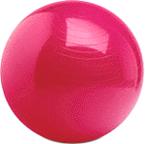Sunday Spotlight: Gloves

We use them to protect our hands from rough/sharp surfaces, heat, cold, and harmful chemicals. Gloves of a certain construction allow a user to apply a more forceful grip on a slippery object. In summary, they keep us comfortable and safe when performing difficult tasks. However, gloves can pose problems on top of the issues that they were designed to address. Thus, it is important that the drawbacks of certain gloves be considered before being employed.
Basic Guidelines:
- Gloves should not fit so tight that they constrict blood flow in the hand, yet they should not be so loose that they negatively affect the user's dexterity.
- "Blue-dot", or nitrile gloves should be used in occasions where extra grip is required. The material increases the coefficient of friction between the hand and the object, allowing the object to be held easier, or a fixture to turned with greater ease.
- Gloves with a Kevlar coating should be used in work environment where cuts/abrasions are a risk.
- Silicone gloves protect the user well in areas where burning hot surfaces pose a hazard. Gloves with Thinsulate material (and optimally, moisture-wicking material) work best for the worker confronted with cold conditions.
- Chemical gloves should have an extension at the wrist to cover the lower forearm to protect against "catastrophic" chemical spills.
Overall, a glove will generally decrease manual dexterity (except for nitrile gloves), increasing the force required to perform manual tasks, and increasing the risk of operator error (through accidental triggering of a wrong button, for example). Before employing gloves in a work situation, ensure that the overall force needed to perform manual tasks is reduced as much as possible, and increase the space between controls to compensate for the loss in dexterity in the gloved hands. This way the protective benefits of gloves can be had, while minimizing the drawbacks.

